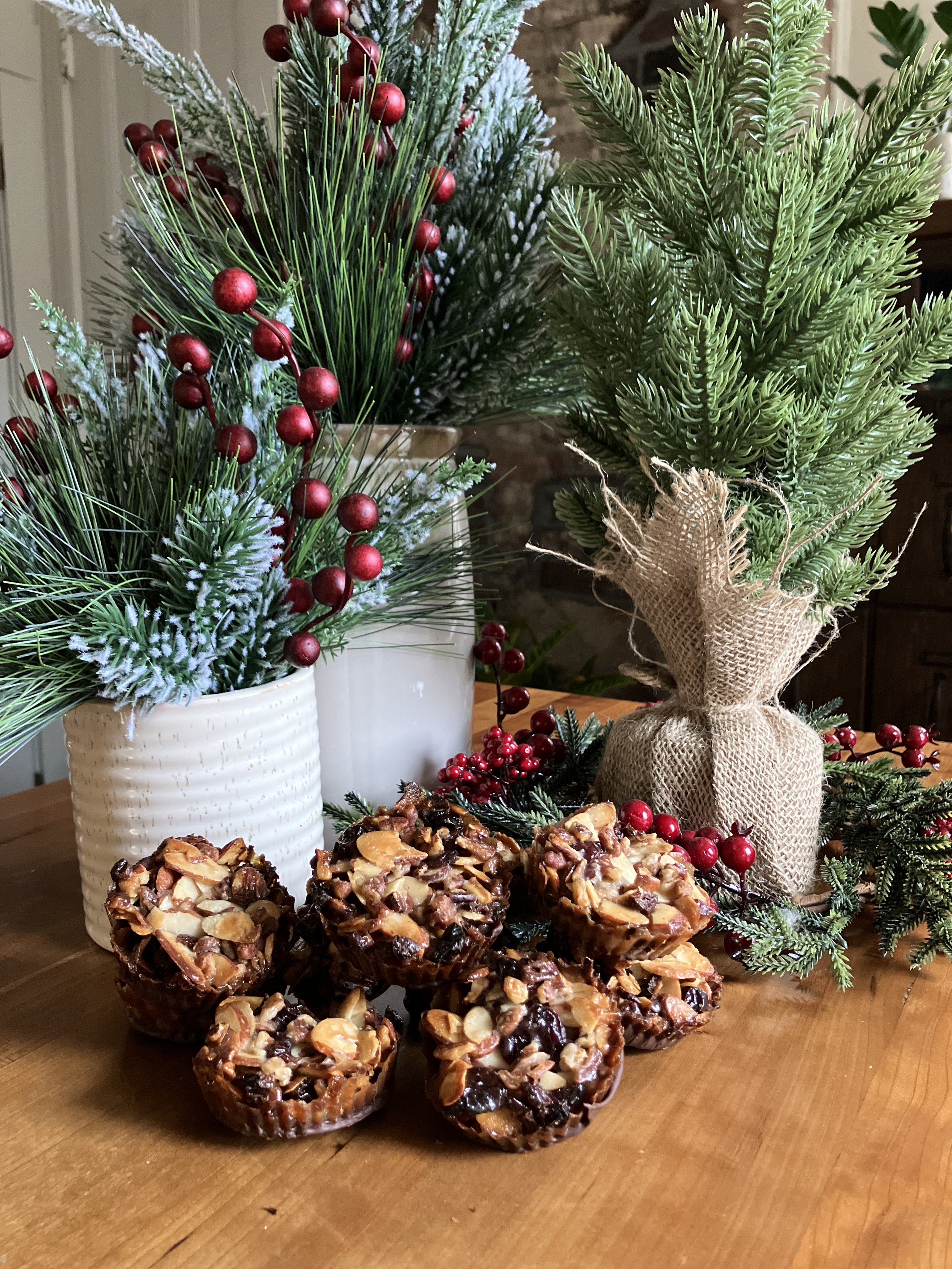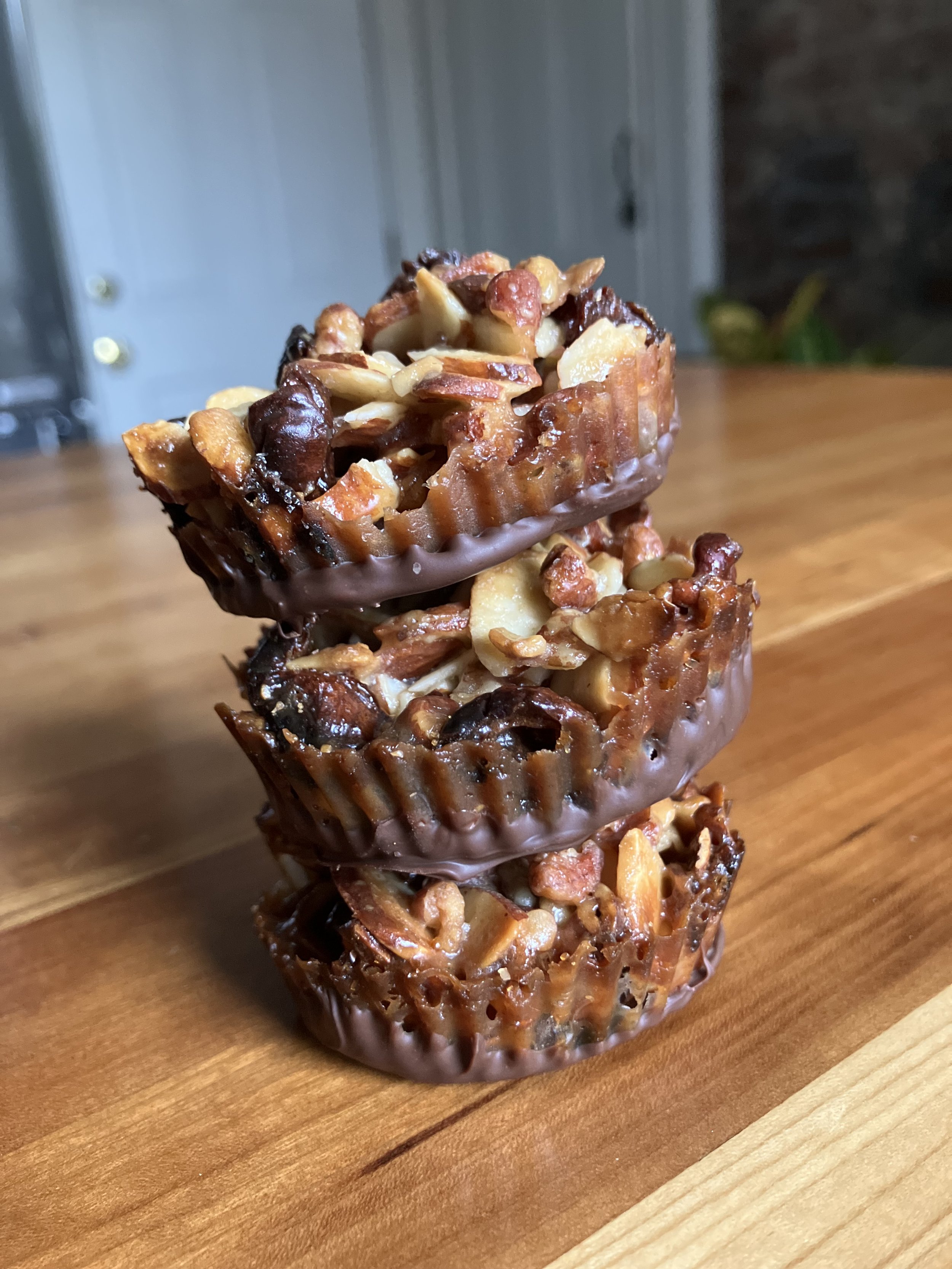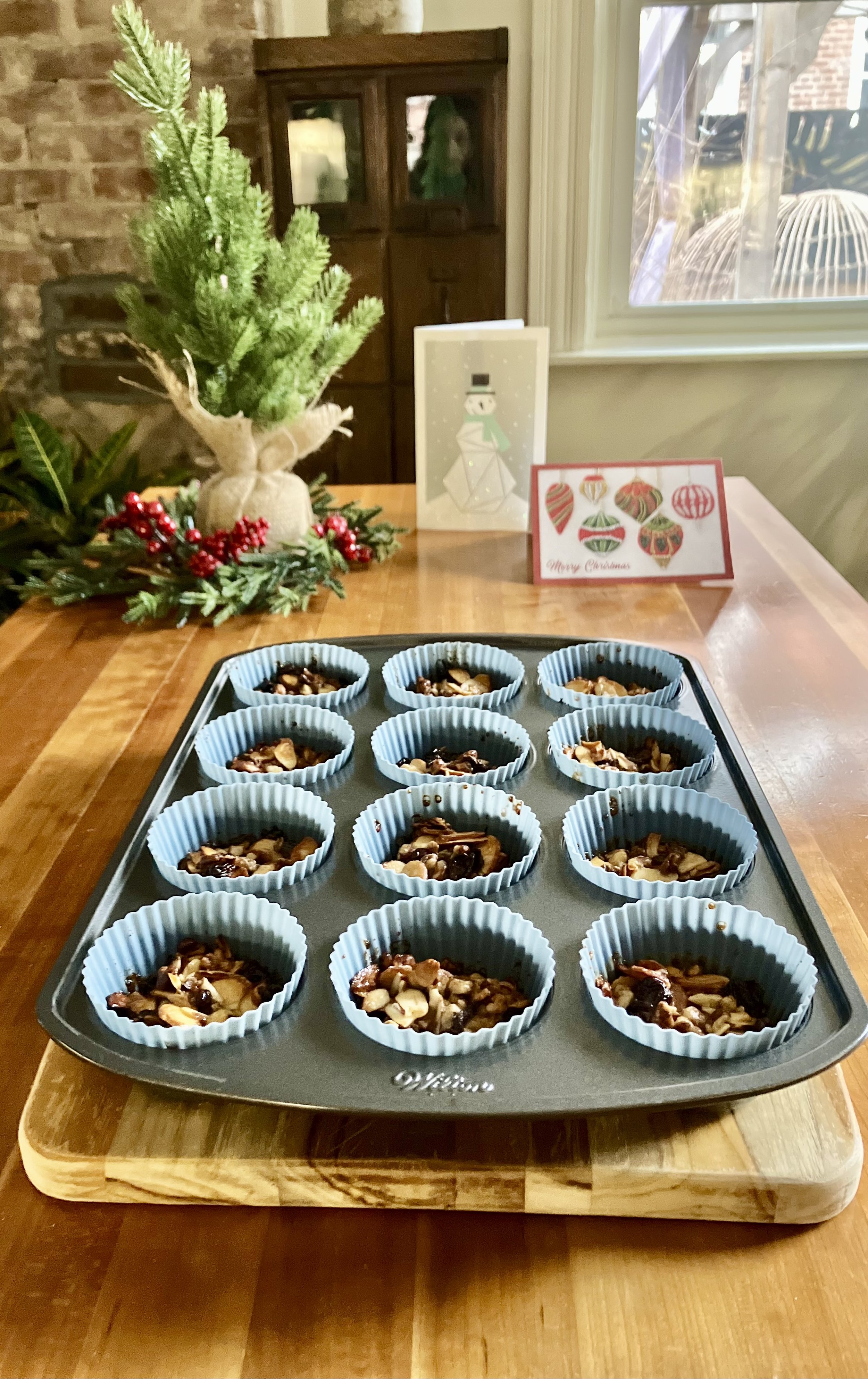Five unique French cookies to try for your upcoming holiday cookie exchange
Five regional French treats to help create the most standout cookie tin this holiday!
It’s that time of the year; the weather is transitioning from fall to winter, fires are roaring, and everyone’s kitchen begins to smell of sugar and spice as they prepare for the holidays. Each year, I do a themed cookie box, featuring sweets and treats that are far from your traditional holiday bakes. The thought came to me a few years back when I was sitting in my kitchen looking at the plethora of cookie tins I had been gifted, and lost count of how many gingerbread and iced sugar cookies I had. While it is, of course, the thought that counts, variety is the spice of life! That moment sent me on a completely new holiday baking path, one filled with unexpected and unusual bakes to fill the cookie tins that I give to friends and loved ones.
When my partner Andy and I take weekend trips from our home in Provence, we love to discover all of the regional sweets that are specific to each little village we visit. After discovering so many incredible cookies throughout our travels around France, it was easily decided that this year’s cookie tin must be themed to cookies found in and around my beloved hexagon.
I know a lot of cookies, and the act of making them for the holidays, do hold sentimental memories for some, but if you’re looking for a way to mix things up and become the standout baker of all of your cookie exchanges, here is my list of five fancy French cookies to add to your tin.
(Photo: Oddviser.com)
I couldn’t do a list without including one of Provence’s most celebrated cookies, the Navette de Marseilles. Translating to “little boat” or “shuttle”, the background of this little cookie varies around the region. Some believe the biscuit was created to celebrate a wooden statue of the Virgin Mary that washed up along the shores of the Vieux-Port of Marseille sometime in the 18th century. Seeing this as a sign of protection, the town created the biscuit in her honor.
Others believe the cookie was created in the shape of a boat to celebrate the arrival of St Lazarus and the “Sainte Maries”, St Mary Magdalene and St Martha, to Provence on February 2nd in a small wooden navette. Wanting to celebrate the event, the now synonymous baker M. Aveyrous founded the navette oven and created the biscuit in the boat shape, symbolizing their mode of transportation.
The date February 2nd, is a special day in France known as La Chandeleur or Candlemas. The holiday, falling exactly 40 days after Christmas, is most closely related to the American Groundhog Day and it is thought that if it rains on the holiday, it means 40 more days of winter. However, if it is clear and sunny on the holiday, that means winter is almost over. In most of France, crêpes are the dish du jour with ritualistic ways to prepare the crêpes in order to bring luck in the new year. In Marseille and other parts of Provence, however, the navette is the sweet of choice, replacing the traditional crêpe.
Photo: (ilvaberetta,com)
The cookie itself is made with incredibly basic ingredients, with the standout flavor being orange blossom water, giving it a light, floral taste. The texture, however, is where the navette is different from other cookies. It is a little harder than a biscotti, making it not only a perfect accompaniment for dunking in a cup of coffee, but just different enough to bring a bit of Provençal uniqueness to any holiday cookie tin.
(Photo:StockFood.com)
Another selection that has ties to France’s neighbor, the Lunettes de Romans, or Roman glasses named for its shape, is a cookie that comes from Romans-sur-Isère in the Drome department of France. The cookie is said to have been created when Italian migrants settled in the town around the 19th century. Missing a little taste of home, the town’s new residents began making their beloved jam-filled biscuits, cutting out what appears to be two eye holes in the dough and calling them lunettes de romans.
(Photo: MesP’titsBiscuits)
The little sandwich cookie can be filled with many different jams depending on your taste and is similar enough to the jam-filled biscuits found in many different cultures, but presented in a shape completely new and different. Make the cookie with different colored jams to add some pops of color to your cookie box and delight the taste buds of your loved ones.
(Photo:EnviedeChampagne.com)
Biscuit rose de Reims are often likened to the Italian lady finger cookie, as it is long and very light. The name, biscuit rose de Reims comes from the color of the cookie and the cooking method used to bake it. In the 1690’s, bakers in Reims were trying to find a way to use the residual heat thrown off from their ovens after baking their bread for the day. A special dough was made and, after its first bake, the biscuits were sent back into the oven so that it could be “bis-cuit” or twice cooked, using the leftover heat in the oven. In order to give the cookie some flavor, vanilla bean was added to the white biscuit dough, but after baking, the dark beans gave the white dough a grayish, unappealing tint. Wanting to make the cookies look more appealing, bakers added a bit of carmine, a natural dye that comes from the cochineal beetle. The dye gave the biscuits their iconic pink hue and their name, Biscuit rose de Reims, was sealed.
Biscuit Fossier is known as the best place in Reims to get your Biscuit Rose de Reims.
It’s no surprise that, since Reims is part of the champagne region and sometimes considered it’s capitol, it is tradition for locals to take this little biscuit and dip it into their champagne before enjoying them. Being baked a second time allows the cookie to be light, but hold its shape while being dunked.
Buy a little six pack of champagne bottles and tie a gift tag with instructions on how to enjoy the drink and biscuit together to create a fun and completely original addition to your cookie tin.
(Photo:FrancoiseKitchen.com)
Who says your cookie tin has to be filled with just cookies? The whole point of doing alternative holiday baking is to introduce new and completely unusual bakes to family and friends. Keeping with traditional winter flavors, but presenting them in a totally unexpected way, my next choice comes from the Burgundy region. Nonnettes de Dijon are small gingerbread cakes filled with honey and marmalade. While these little cakes can be found all around France, Dijon is the city most associated with these treats. Nonnettes, or “little nuns,” were first made by nuns in the abbey around the middle ages, giving the cake a long history in the area.
(Photo: TheDaringGourmet.com)
Traditionally, the nonette is made with orange marmalade, but you can find them with different fillings such as strawberry or blackberry jam, lemon curd or even the very French, black currant. Add a little gingerbread in the most unexpected way by incorporating Nonnettes into your holiday box this year.
I used fluted cupcake silicone molds, giving the Florentine ridges around the edges.
Florentines are one of those cookies that are a bit of a mystery to historians. While some claim the cookie was created in Italy and named after the city of Florence, others dispute that idea. Some believe it is more likely that the biscuits were created in France by a palace chef and given the name Florentine in honor of the famous queen of France who hailed from Florence. Catherine de Medici, holding the throne from 1547-1559, was renowned in France for her love of gastronomy and so it wouldn’t be too far-fetched to believe that foods of that time were named in her honor. It is even documented that the queen was an avid spinach lover, connecting her to the naming of other French favorites, such as eggs florentine and chicken florentine. When it comes to confirming the biscuits origins, though, historians have noted that the ingredients of the florentine are consistent with items traditionally used in France during that time, also noting the base of the biscuit uses a specific roux found in French recipes from that time period.
Up close and personal!
A traditional florentine biscuit has nuts and a mix of candied fruit and citrus peel, swirled together with a rich caramel sauce. Once baked, the florentine is dipped in chocolate on one side. The issue most people have with these little biscuits is that they have the tendency to spread while baking. In order to prevent this, I suggest putting them in a silicone mold. The recipe provided has photos of a mold that is ideal for the best results. Part candy, part cookie, if you’re looking for something incredibly different that will stand out in any holiday tin, give florentines a try.
What are your go to French (or foreign) cookies to add to your holiday cookie tin?
Do you have a recipe passed down from generation to generation to share?
Tell us all about your favorite cookies from abroad below!
Joyeux Noël! - R












